America’s classic diners through the decades
Counter culture
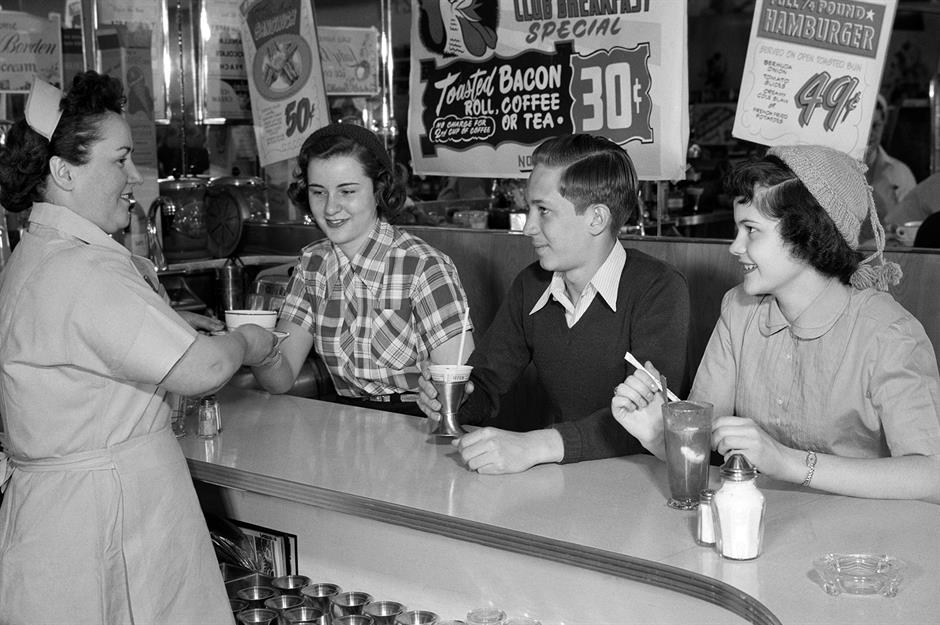
Diners are a cornerstone of America's food culture, known for their giant portions of home-style cooking, winking neon signs and rocking jukeboxes. But did you know that their roots go right back to the 19th century? Here we whisk you through the delicious history of US diners from the 1890s to the present day, taking a look at how they evolved from horse-drawn lunch wagons catering to late-night workers to the charming, nostalgic joints we know and love today.
Click or scroll through our gallery and feast your eyes on some of the oldest images of American diners that exist today.
1890s: how the diner began
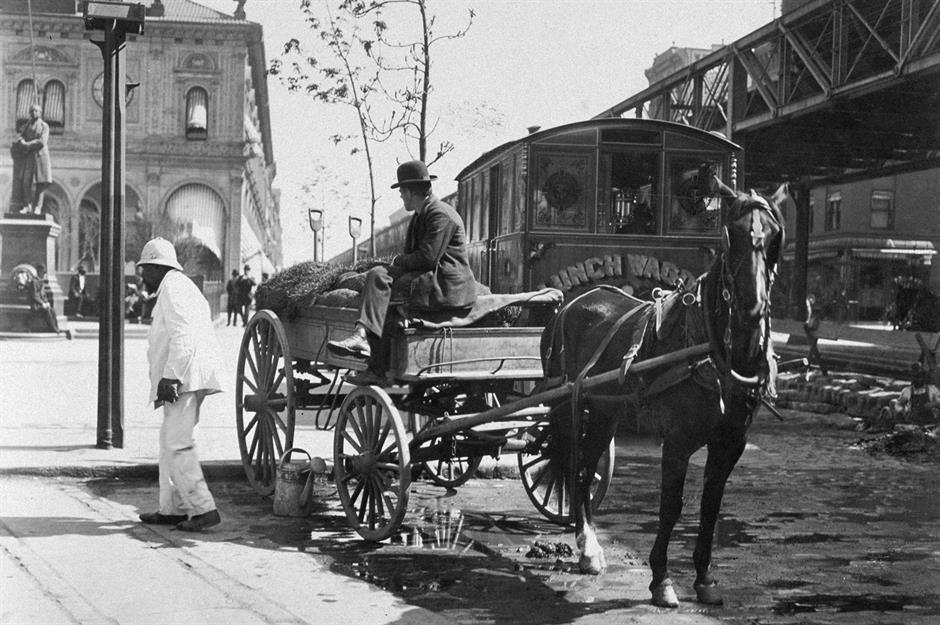
Think of a diner now and you’ll probably imagine a gloriously retro joint with chequered floors and chrome bar stools – perhaps even a jukebox. But the earliest ‘diners’ were a far cry from the neon-splashed establishments we're familiar with today. In fact, their roots are traced back to simple, covered lunch wagons, just like this one pictured in Herald Square, New York City in 1899.
1890s: the precursor to the modern diner
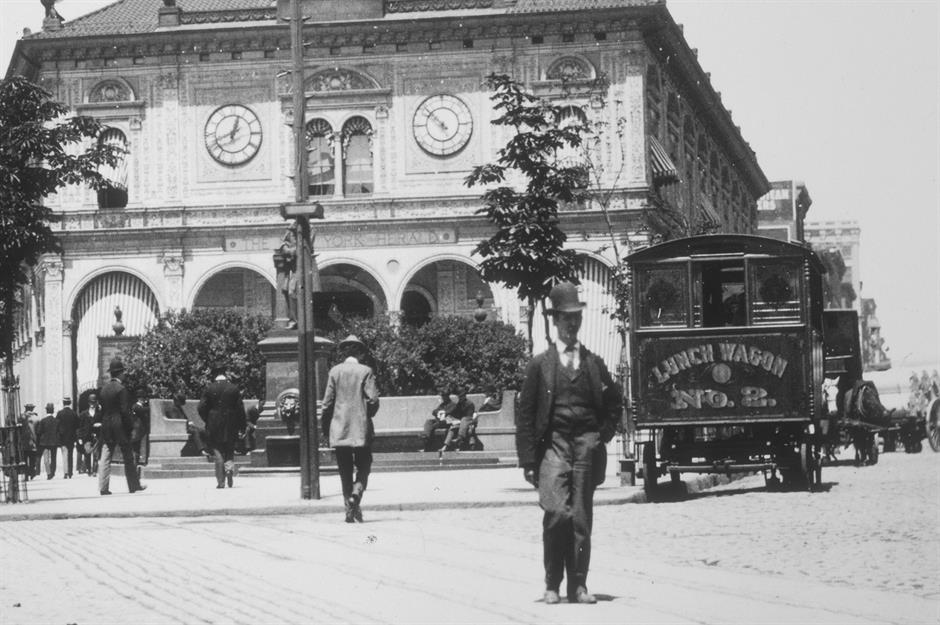
These nascent diners were typically horse-drawn carts doling out comfort food like sandwiches and pies to late-night workers who’d missed last orders elsewhere. Walter Scott of Providence, Rhode Island is credited with inventing the very first one: in 1872, he parked it up in front of a newspaper HQ and served snacks to dedicated hacks putting in extra hours at the office. It would have looked much like this New York City lunch wagon, pictured at the turn of the century.
1900s: a new era for the lunch wagon
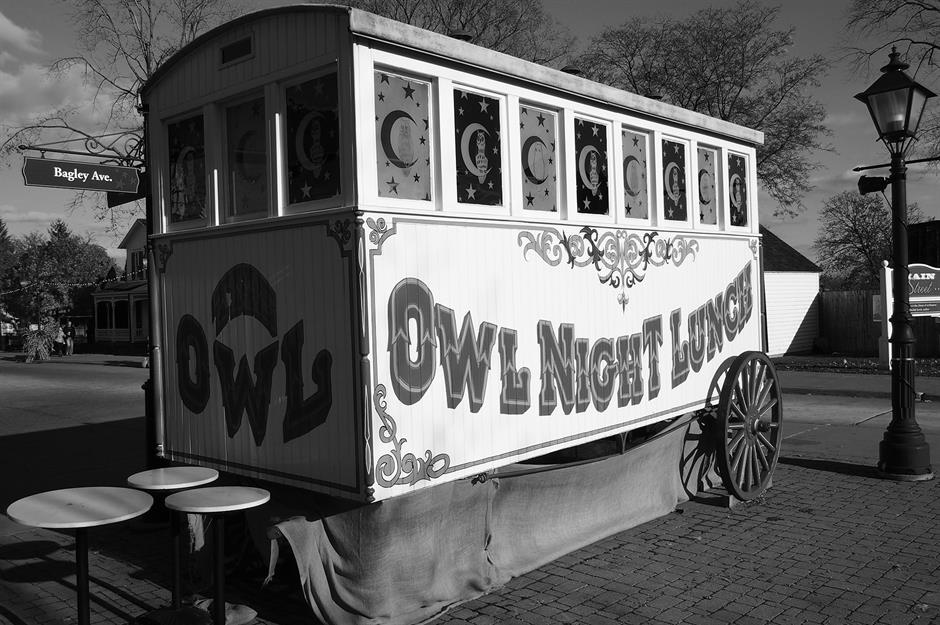
The craze spread as quickly as the scent of freshly slung burgers, and by the late 1880s a Worcester, Massachusetts man and former lunch-wagon worker named Thomas Buckley began manufacturing his own carts. Soon Buckley’s wagons were popping up in cities across the States – pictured here is a replica of a 1903 Buckley wagon on show at the Henry Ford Museum in Dearborn.
1900s: the Worcester Lunch Car Company is born
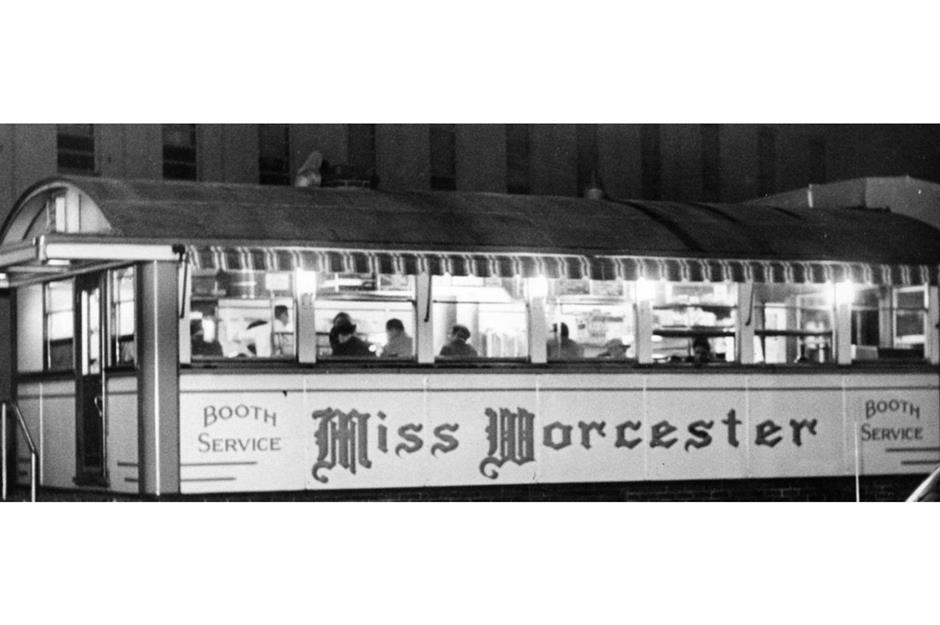
The year 1906 was a landmark in diner history. It was the year that the Worcester Lunch Car Company, which manufactured hundreds of diners in its five decades of operation, was founded. Over the years, the Massachusetts-based company opened iconic spots such as Casey’s Diner in Natick and Rosebud in Somerville. One of its offshoots, the Miss Worcester Diner in (you guessed it) Worcester, is pictured here later in the century.
1910s: the rise of casual dining
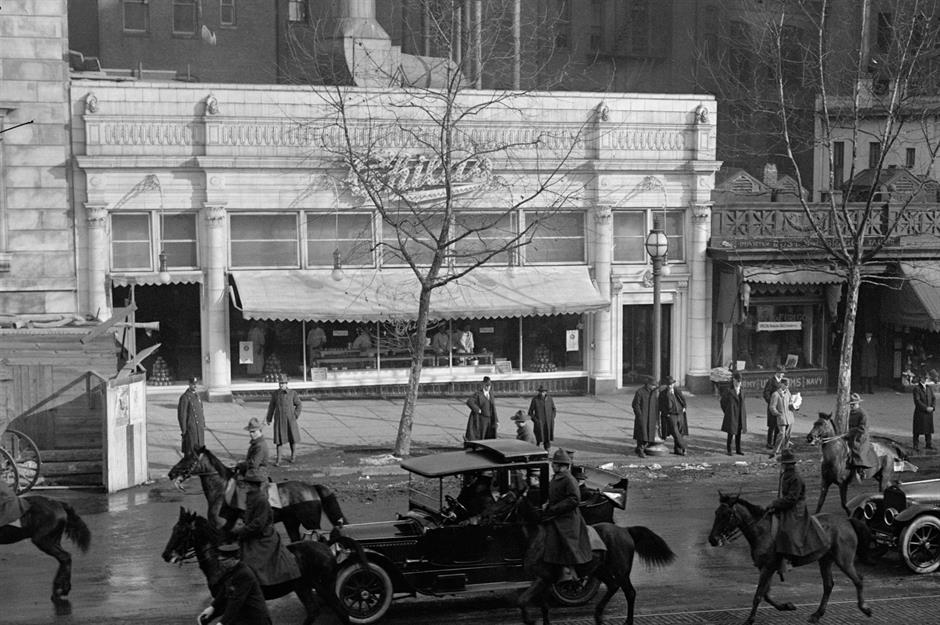
By the early 20th century, brick-and-mortar restaurants were taking inspiration from the quick, casual dining style of lunch wagons. The Childs Restaurants chain, founded in New York City in 1889, was among the first to offer a more relaxed dining experience with an emphasis on efficiency, cleanliness and affordability. The brand introduced many innovations, such as standardised menus and uniforms for staff, and by the 1920s, grew to become one of the largest restaurant chains in the US. This image from 1917 shows the Childs Restaurant on Pennsylvania Avenue, Washington DC.
1910s: the first fast food restaurant
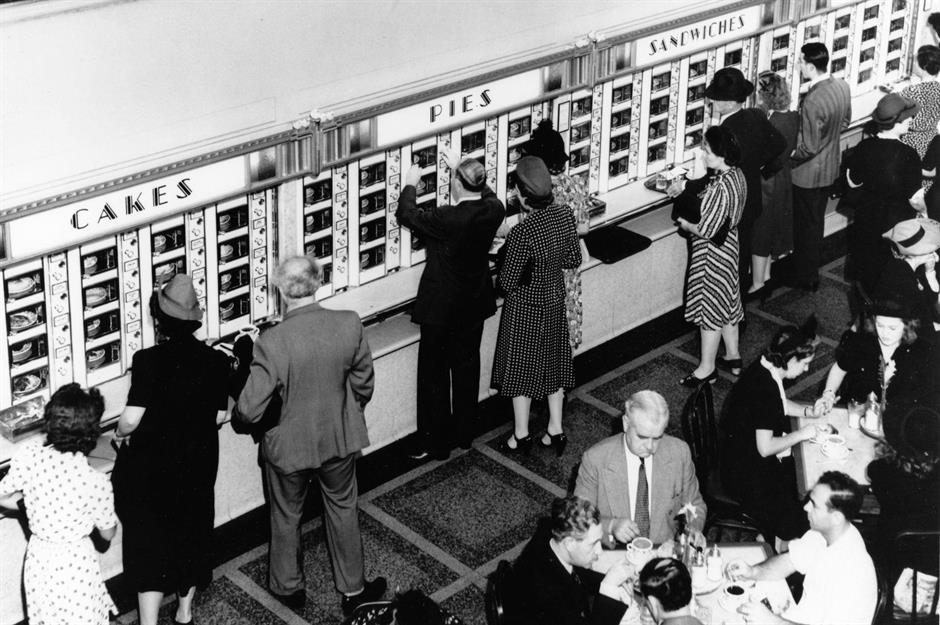
Another precursor to the diner was the automat, a revolutionary style of eating that let patrons serve themselves from coin-operated vending machines. The first Horn & Hardart Automat appeared in New York City in 1912, and it heralded a new culinary culture. Credited as America’s first fast food chain, the company had more than 100 locations between New York and Philadelphia at its peak, selling everything from sandwiches and salads to pies and cakes. Though this is a far cry from the cosy booths and counter service of later diners, the focus on quick, comforting and affordable food shows how restaurant culture was shifting.
1910s: the classic diner takes shape
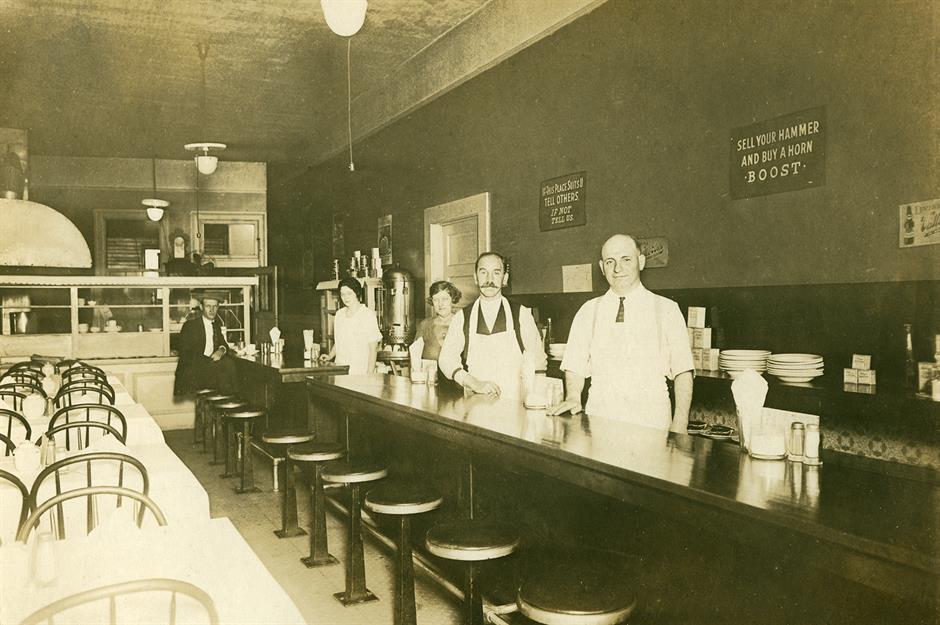
By the 1910s, the diner was inching closer to its classic form. The first stationary diner is thought to have been built by Jerry O’Mahony (later of the Jerry O'Mahony Diner Company) in 1913. This nostalgic shot dates to 1919 and captures a pared-down diner filled with staff and a single customer. Notice the long bar, round bar stools and eclectic signage – all little details we might spot in modern diners today.
1920s: a new diner in New York City
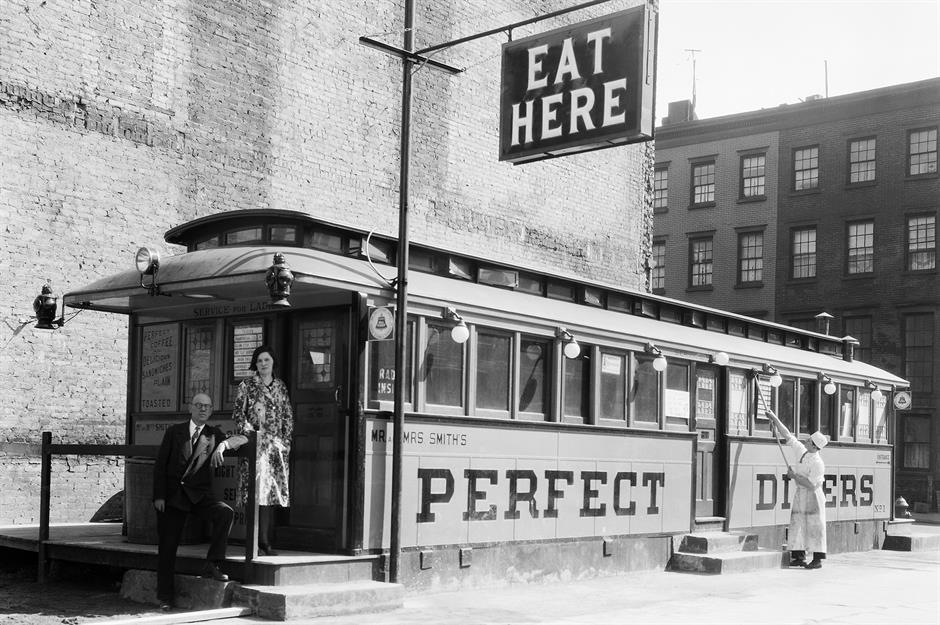
The Roaring Twenties conjure up images of flappers, rum runners and moody speakeasies – and in many ways the convivial, brightly lit diner was the antithesis of this. But it was just as essential to American culture. It was in this decade that the name diner was coined, since this new breed of parked, prefabricated venue looked a lot like a railroad dining car. This one is snapped in New York City circa 1920.
1920s: punters at the bar in a 1920s diner
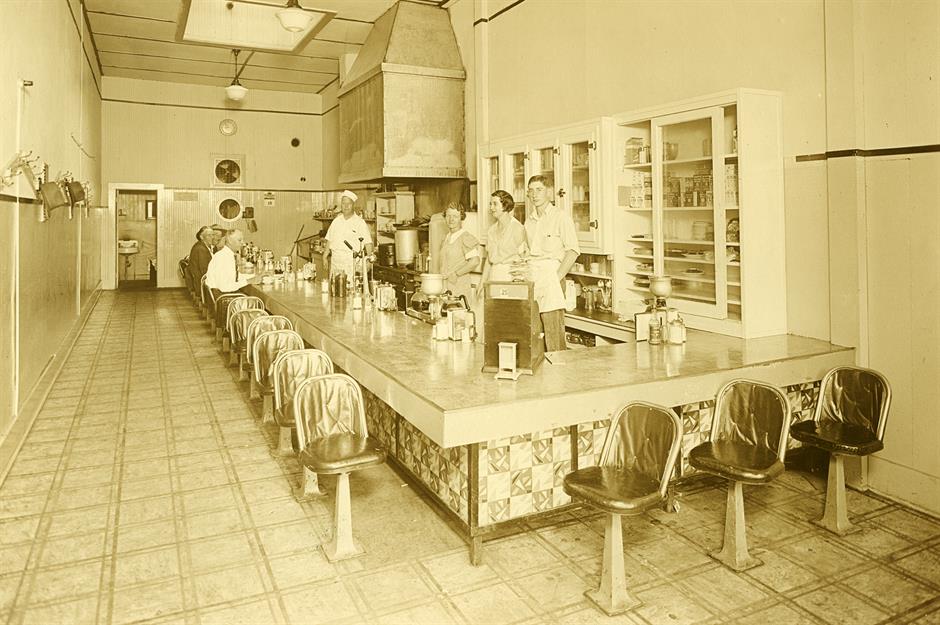
As early versions of the modern diner popped up across the country, more traditional lunch wagons began to fall out of favour. They earned a rep for late-night brawls and a raucous clientele – quite a contrast to the jolly image of the all-American diner that was beginning to emerge. Smiling customers propped up at the bar enjoying a cup of Joe – this 1927 image encapsulates the wholesome spirit of the diner.
1930s: a diner waitress makes Quaker oats
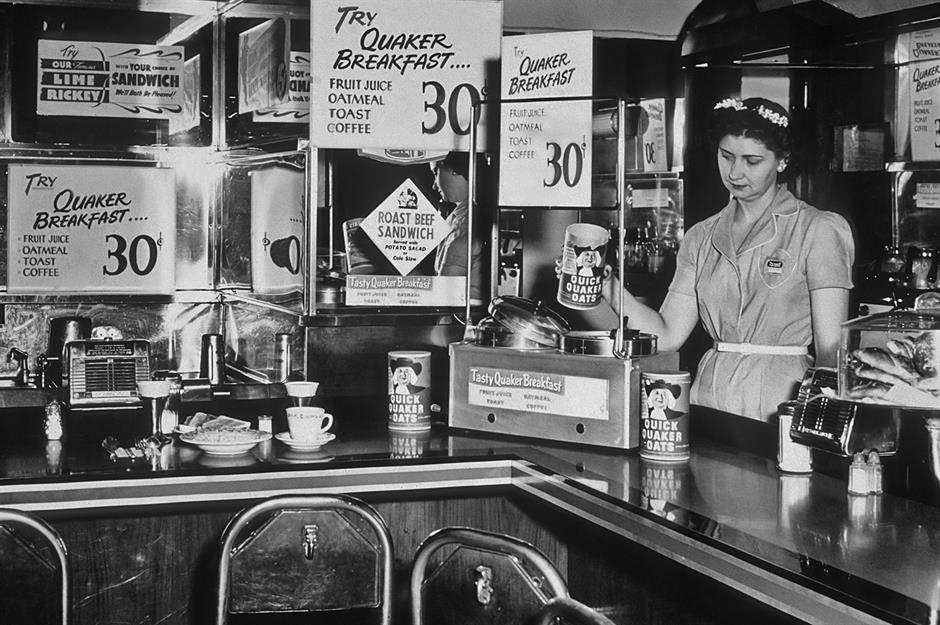
Something that’s remained pretty constant throughout its history is the diner’s reputation for hearty, home-style cooking. No-fuss food like roast beef sandwiches, Quaker oatmeal and coffee are on offer at this snug diner captured in 1935.
1930s: Art Deco style
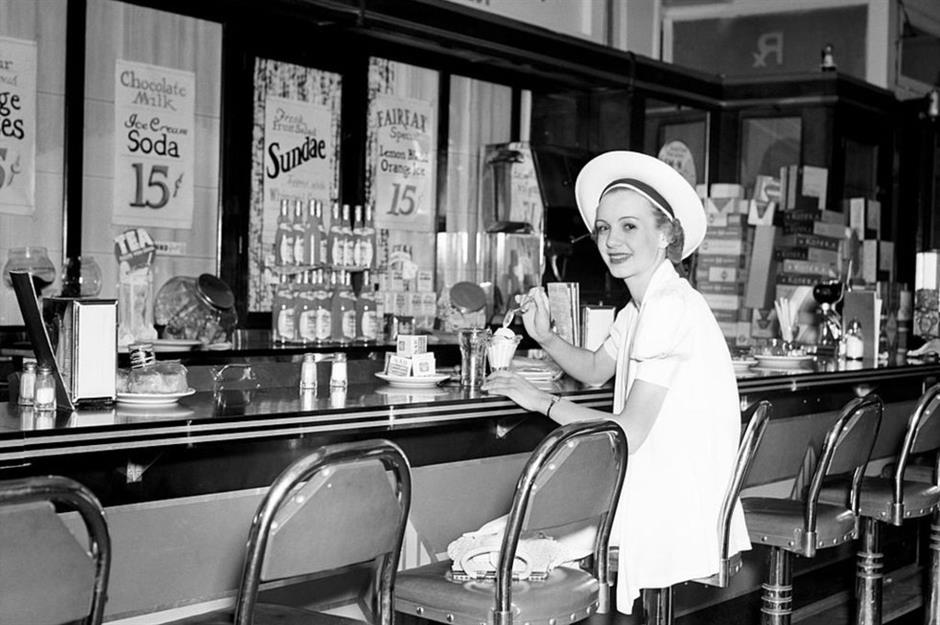
The Art Deco period ran from the 1920s to the late 1930s, and American diners in this era certainly caught the wave of this revolution in decor. This photograph from 1939 shows a quintessential Art Deco–style diner, complete with gleaming stainless steel, geometric shapes, monochrome patterns and a generally elegant vibe. This simpler style is in quite stark contrast to the brightly coloured, neon-lit diners, with their Formica tables and red vinyl, that we’d come to see in the 1950s.
1930s: New Jersey's Summit Diner
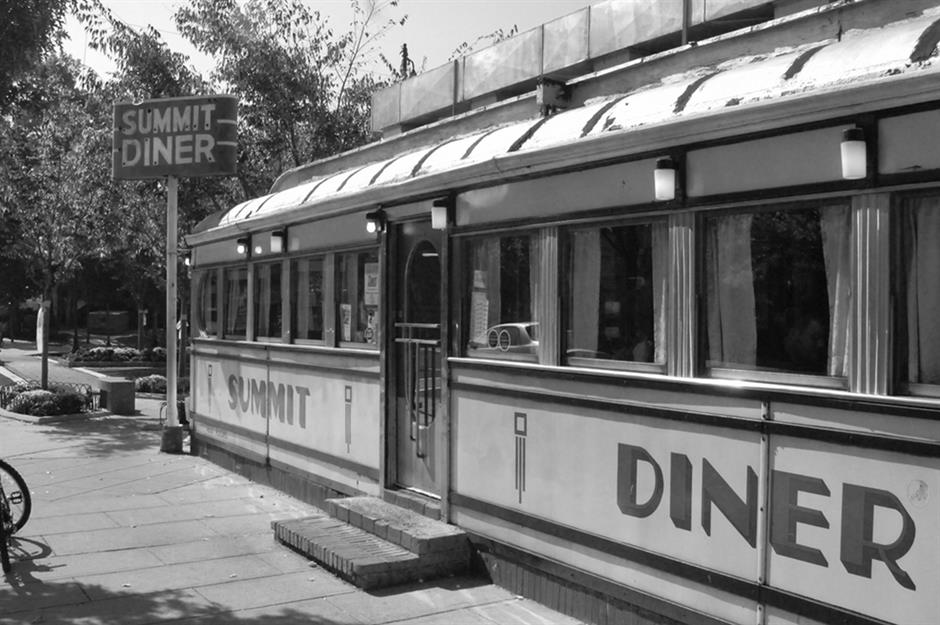
In the first half of the 20th century, diners built by the Jerry O'Mahony Diner Company continued to pop up across the States. In fact, it's said that some 2,000 diners were constructed by the company in its near four decades in operation. Among them was New Jersey's still-operating Summit Diner, which was built in 1938.
1930s: inside Joe's Cafe, Los Angeles
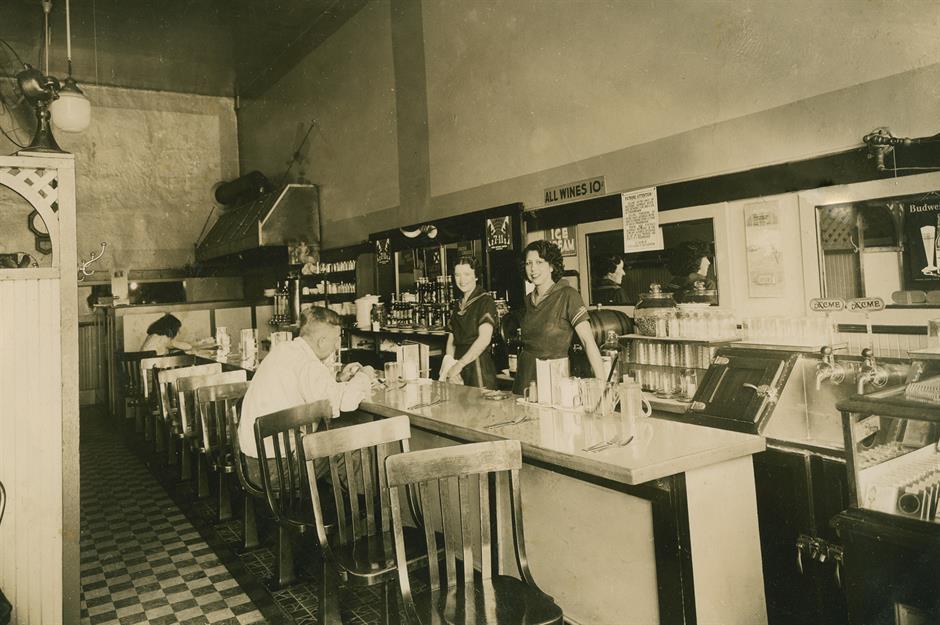
Diners were family establishments through and through but, after the Prohibition era ended, some served harder tipples alongside the milkshakes and meaty meals. This joint advertises wine and Budweiser beer, as servers smile for the camera in 1937.
1930s: a lunch counter in New York City
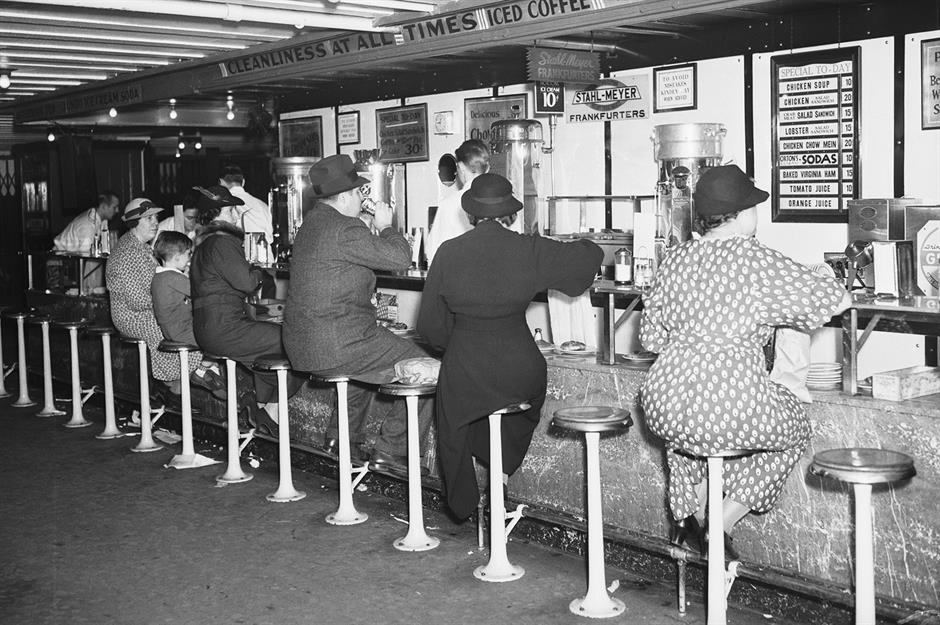
Before too long, diner-style joints were popping up everywhere – this 1930s lunch counter was located underground at a subway station in New York City. The menu sounds tempting too: travellers could choose between everything from a lobster salad sandwich and baked Virginia ham to chicken chow mein.
1930s: a waitress serves a young couple
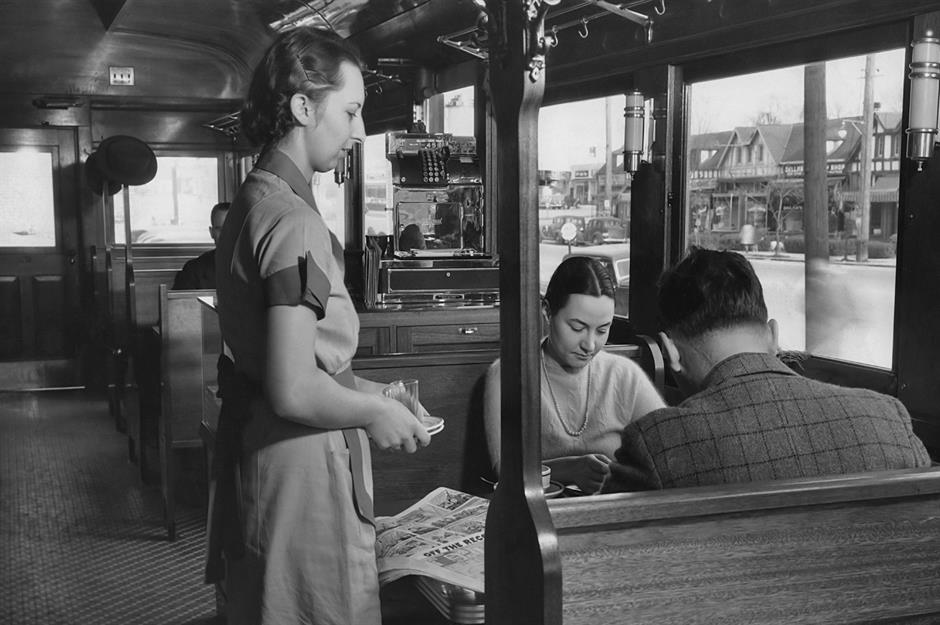
The Great Depression took a toll on America’s service industry with many potential customers choosing (or being forced to) tighten their purse strings and stay home. Yet, the great American diner survived – partly because of its robust and fairly priced food and drink. In this photo from 1935, a diner waitress collects coffee cups from a couple catching up on the news.
1940s: smiling diner staff in the 1940s
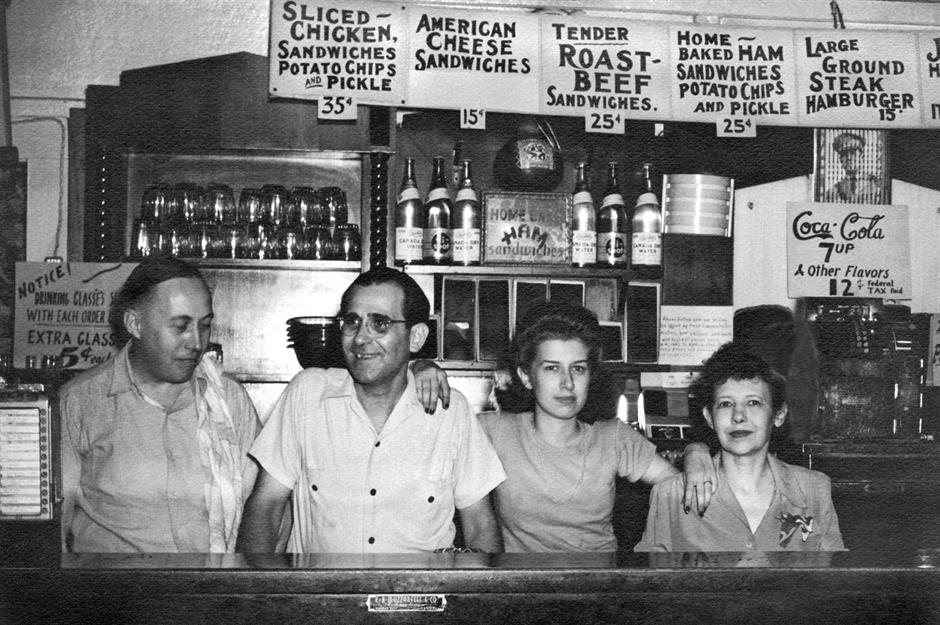
As the diner established itself as a cornerstone of American culture, it became about a lot more than comfort food and a cup of Joe. The diner was fast growing into a place to share news, see familiar faces and ultimately foster community spirit – something especially important during the war-time years. Here a close-knit team of smiling diner staff are captured circa 1940.
1940s: striking workers at a 1940s diner
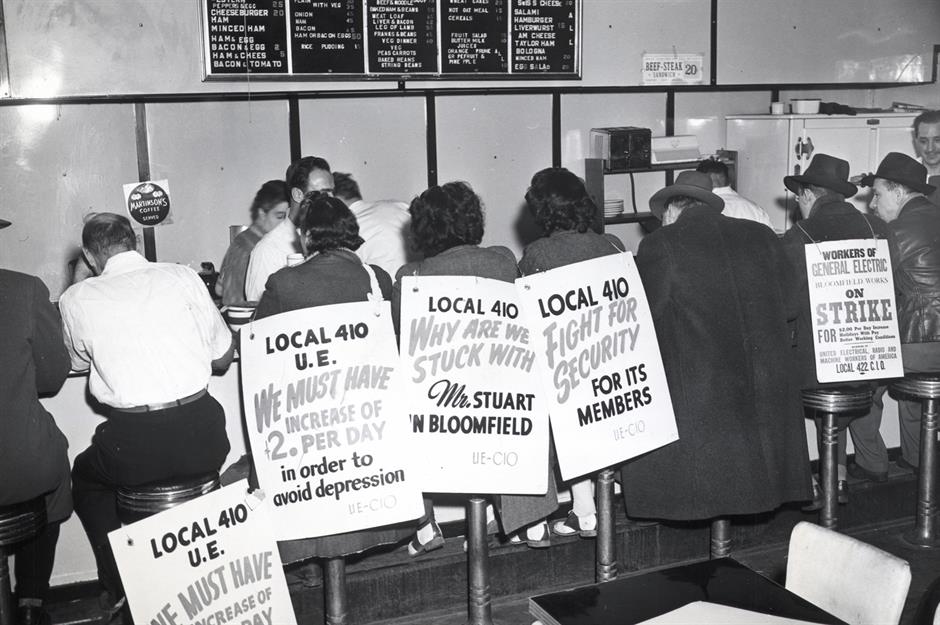
Over the years, diners have served as a community rally ground, as well as a place for good old-fashioned mom-and-pop food. And, given their roots as a place for the everyday worker, they’ve been witness to a fair few strikes over the years. Taken in 1946, this photo shows workers from the Westinghouse Electric Company stop for sustenance during a strike over pay. The down-to-earth Bloomfield diner in New Jersey was close to the Westinghouse plant.
1940s: diner staff and punters listen to a radio broadcast
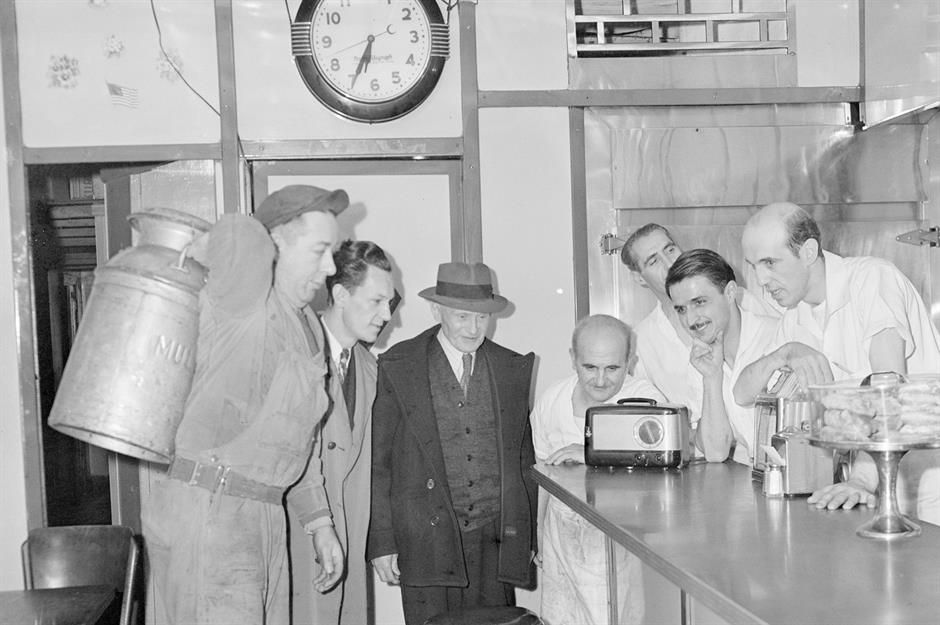
By the 1940s, diners had well and truly established themselves as America’s living room. Here, in 1947, early morning workers huddle around a diner radio to listen to a broadcast of Queen Elizabeth II’s (then Princess Elizabeth) wedding to the late Prince Philip. They’re all smiles as the royal nuptials unfold.
1940s: a heaving diner car
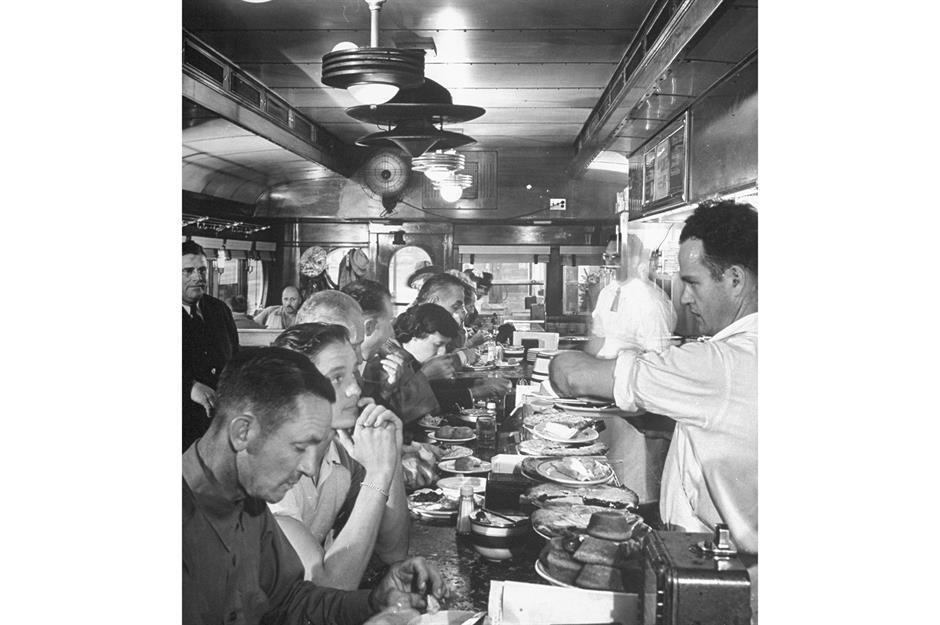
Still, what underpins the classic diner is its food, which is on display in this 1940s snap. Look carefully and you can spot heaving plates of both sweet and savoury pies, as well as hefty breakfasts and steaming cups of coffee. The crowded dining car must be testament to just how tasty the food served was.
1940s: The Pig diner near Los Angeles, California
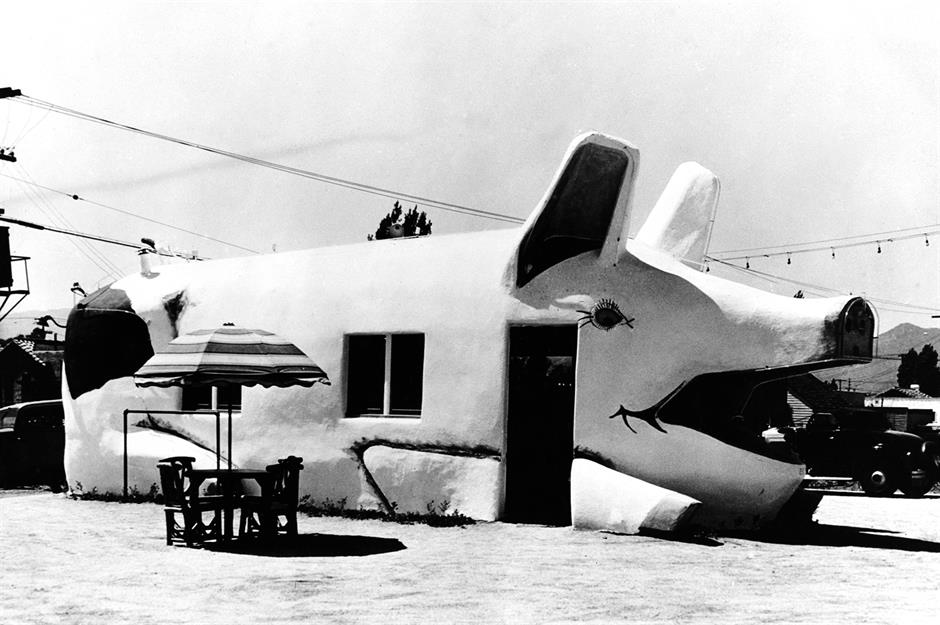
While most diners opted for a classic, railroad-dining-car-style model, there were some outlets that turned the concept on its head, even in the early days. This striking diner, shaped like a pig, could once be found on the outskirts of Los Angeles, in the Golden State. As the decades have moved on, wacky diners popped up in everything from aircraft to giant statues.
1950s: Salem Oak Diner in New Jersey
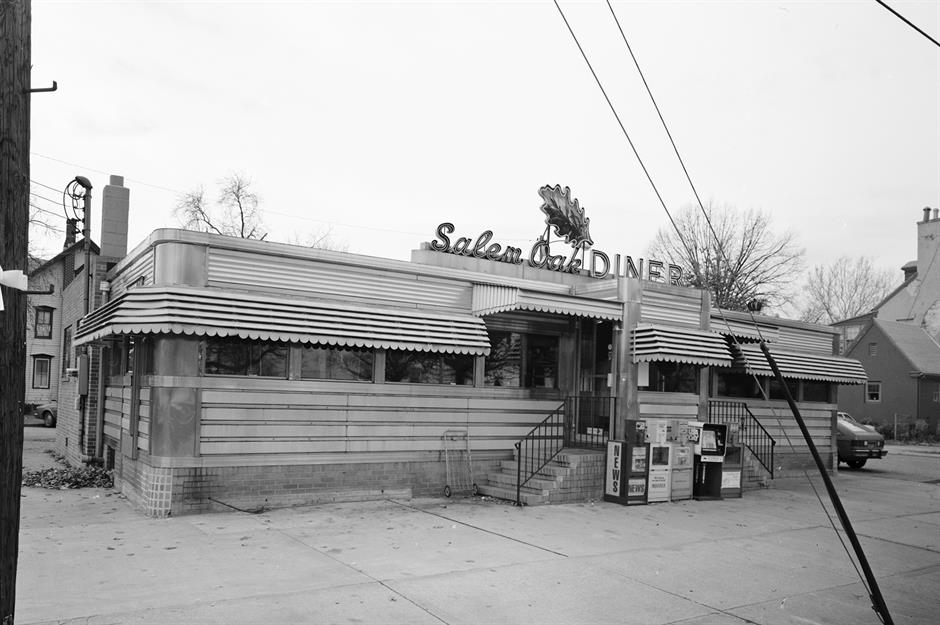
Fast-forward to the 1950s and the steel-clad, neon-tinged, Art Deco-style image of the classic diner had become an icon of American culture. New Jersey’s Salem Oak Diner, which opened in the 1950s, is a perfect example. The iconic joint is still going strong today.
1950s: a diner in Downtown Nashville
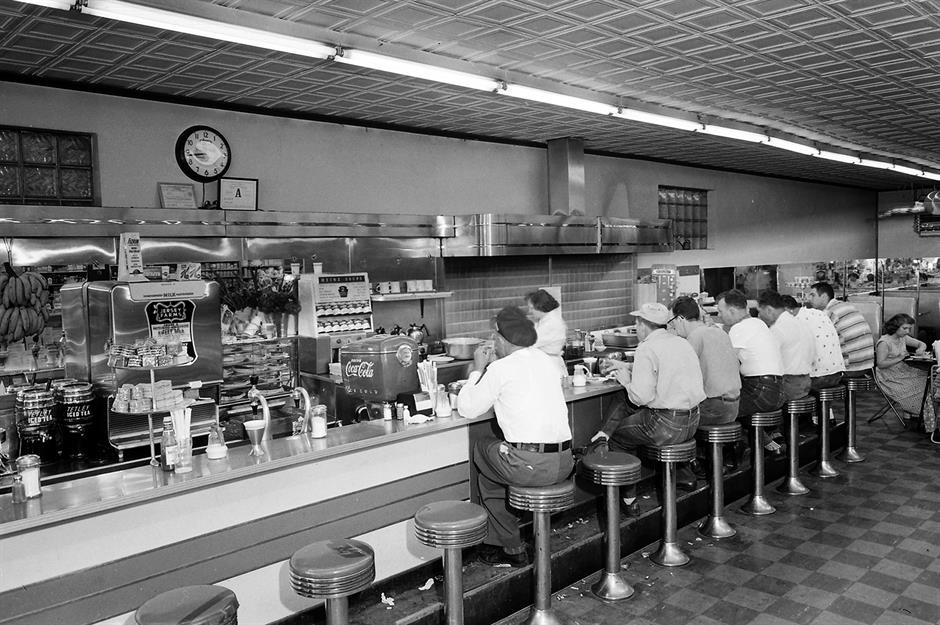
Up until the end of the Great Depression, almost all diners were located in the Northeast, but after the Second World War they spread beyond their original urban and small-town market to highway strips in the suburbs, reaching the Midwest and Southern states. Any city worth its salt had a diner by the 1950s and this wonderfully classic diner is located in the centre of Tennessee's capital, Nashville. It's every inch the staple American diner, from the long bar and wall clock to the soda fountain – not to mention the row of hungry punters digging into finger food at the bar.
1950s: teens laughing at a diner
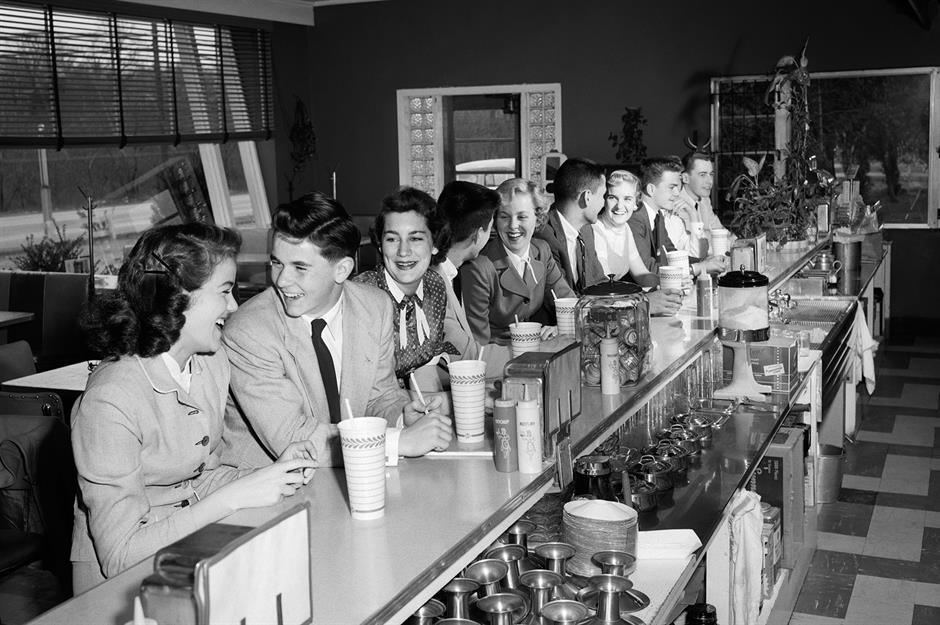
America boomed in the post-war years, and so did the country’s diners. Many consider this to be the golden age of the American diner with films like Grease (1978) recreating the kitschy, colour-splashed joints of this era. A group of well-coiffed youngsters enjoy shakes and laughs at a classic 1950s diner in this photograph.
1950s: a roadside diner in Virginia
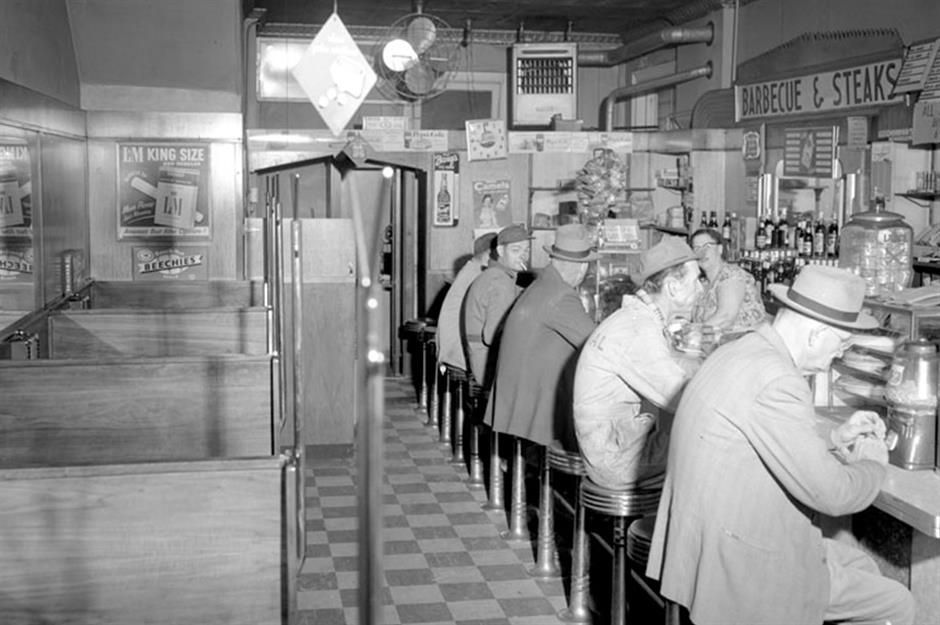
Car ownership soared in the 1950s and that was good news for the down-home roadside diner, which attracted both road-tripping families and travelling workers. This joint, pictured in 1955, was at 802 Hull Street, a busy highway running through Richmond, Virginia. Weary drivers could look forward to stopping by for warming meals like barbecue chicken and steak here.
1950s: teens choose a song on the jukebox
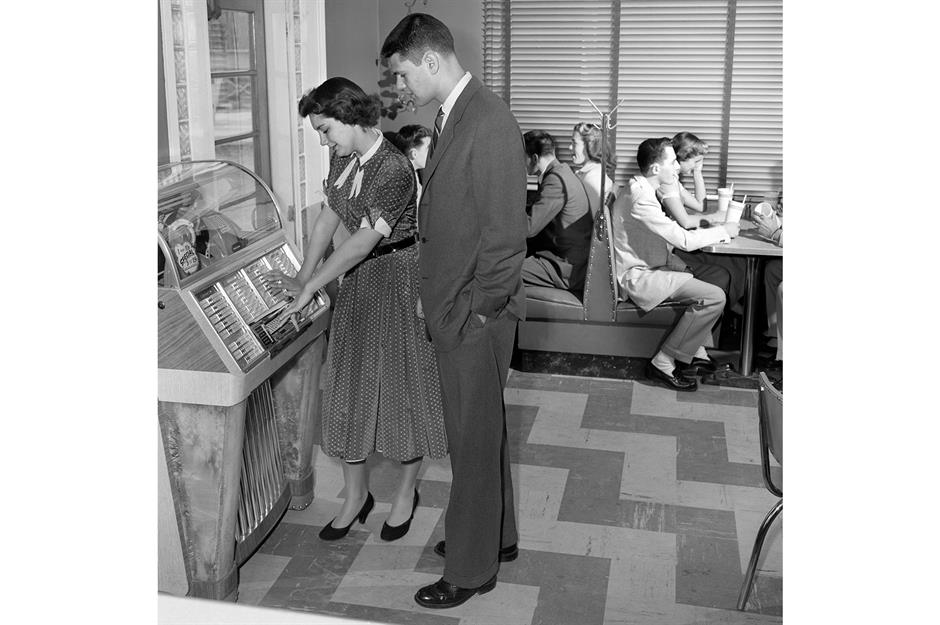
Another diner mainstay was the jukebox, which was invented back in the 19th century. They peaked in popularity in the 1950s, though, when jukebox plays were even included in the Billboard Hot 100. In their most classic form they were loud, proud contraptions with bubble tubes, colourful lights and plenty of chrome. Here, a young couple choose a tune in a diner in the 1950s.
1950s: milkshakes all round
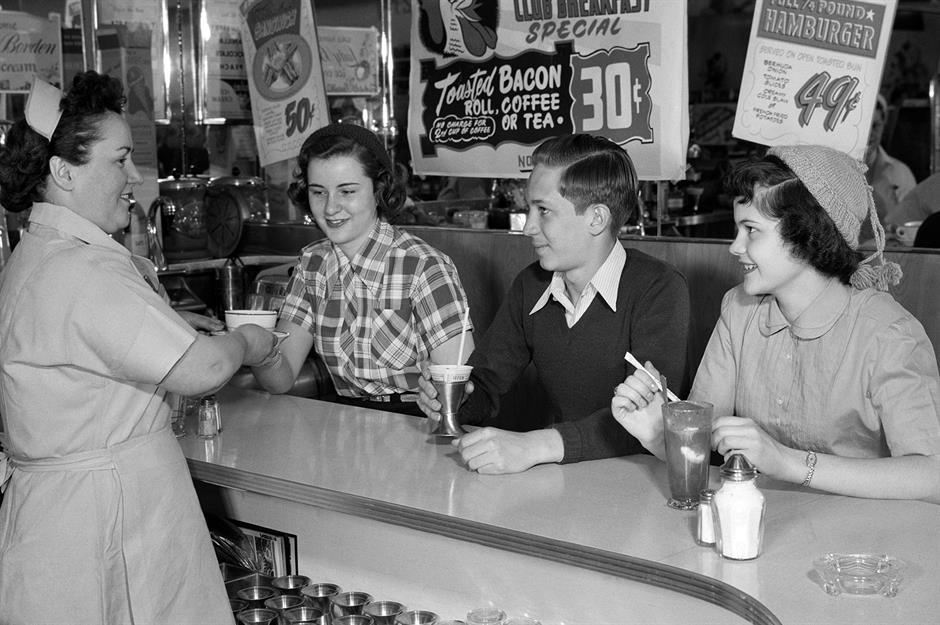
This nostalgic snap encapsulates the wholesome spirit of the American diner, as a smiling, apron-clad server chats to a row of young people enjoying milkshakes and sodas. The prices are a blast from the past, too; you could get a quarter-pounder burger for just 44 cents, and a toasted bacon roll and a drink for just 30.
1960s: a New Jersey major at a diner in Elizabeth
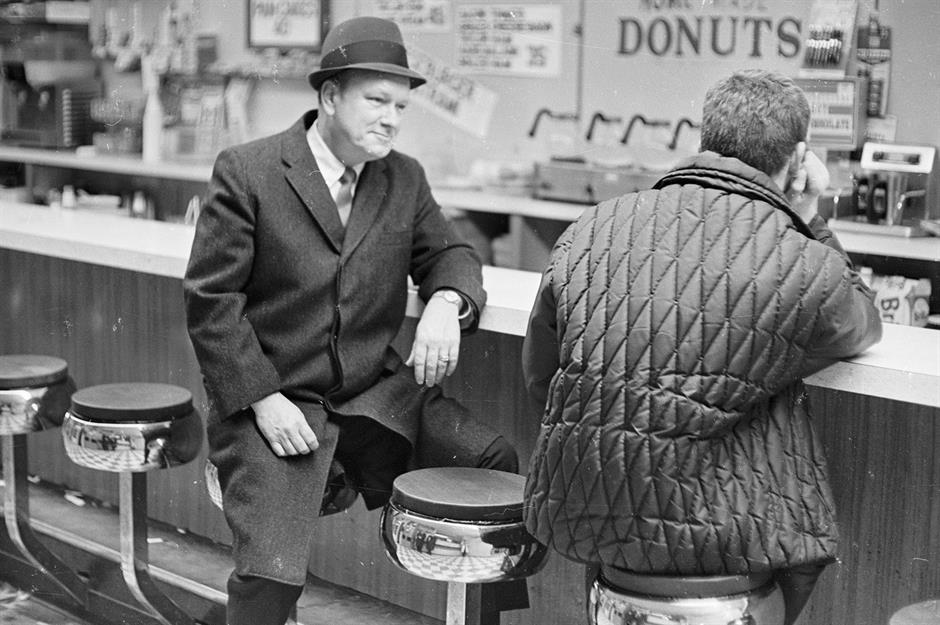
Today New Jersey is known as the 'Diner Capital of the World' since it has more than 500 diners in operation – and it was well on its way to earning that moniker in the 1960s. Here Tom Dunn, then-mayor of Elizabeth, New Jersey, sits alongside a local in a classic Garden State-diner showing he was a man of the people. We wonder if he ordered the donuts...
1950s: a celebrity stops by her local diner
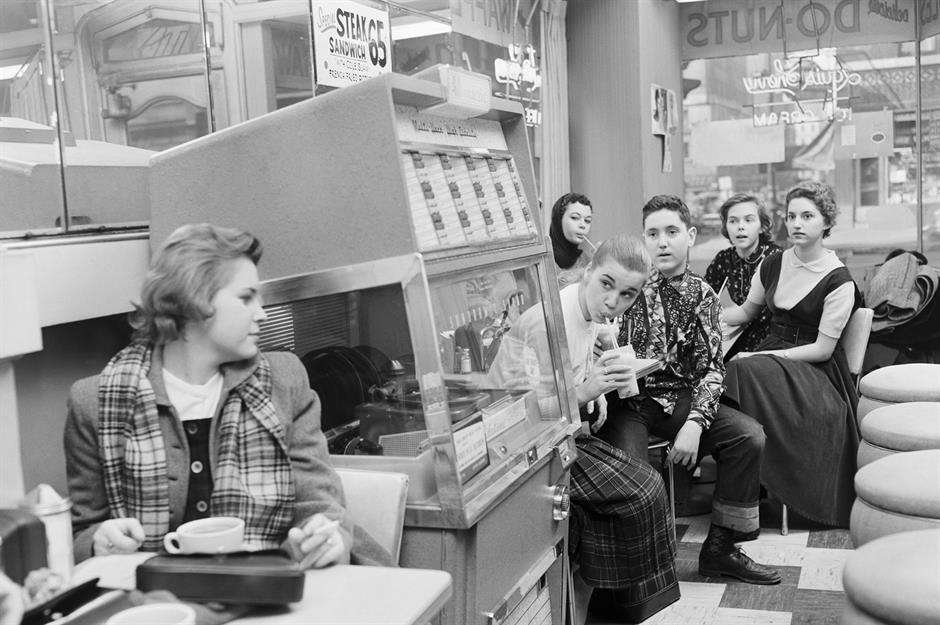
By the 1950s, diners were no longer just the domain of the everyman. They were also hangout spots for celebrities, politicians and more. This fun snap shows teenage Broadway and film actor Betty Lou Keim enjoying some time with a bunch of friends in a typical diner in 1956.
1960s: JFK chats to supporters at a New Hampshire diner
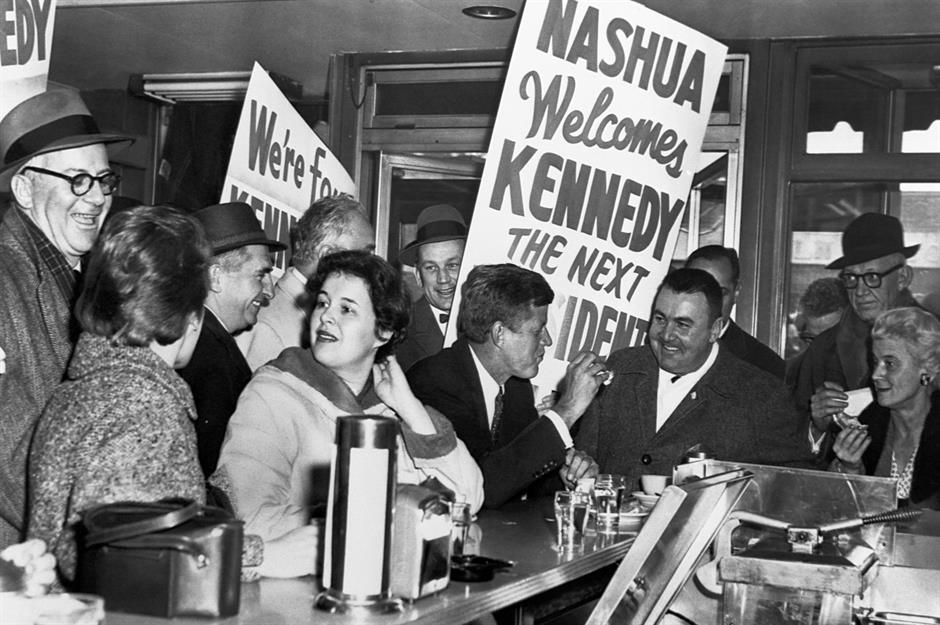
Visiting a down-to-earth diner became a mainstay for every presidential candidate on the campaign trail too – and John F. Kennedy was no exception. Here he is in the 1960s, sitting at the steel bar of a humble diner in Nashua, New Hampshire. Punters cram in to see Kennedy, wielding signs of support, as he sips coffee and chats amiably to those around him.
1960s: a Civil Rights sit-in at an Alabama diner
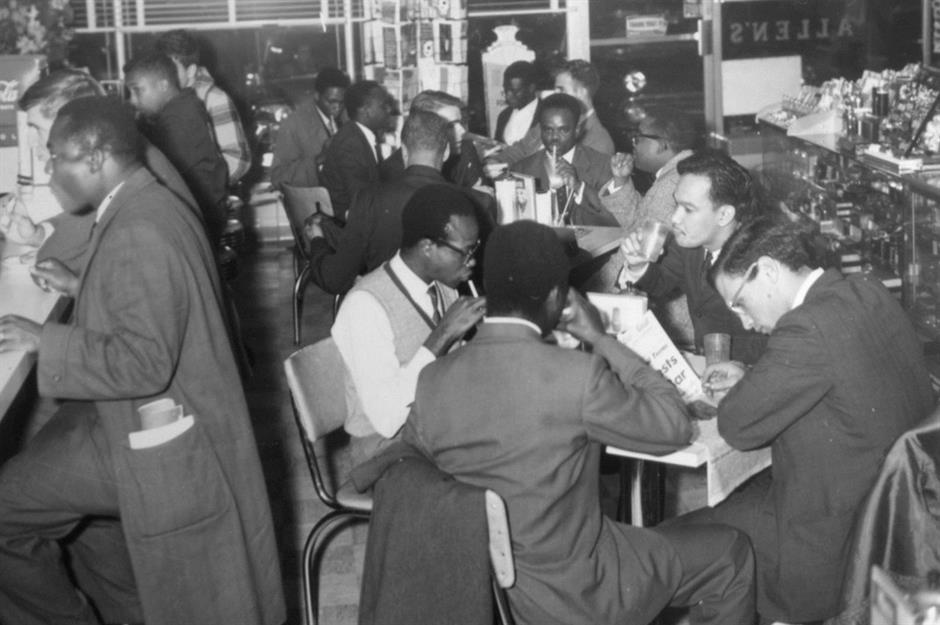
Diners were a hotbed for Civil Rights demos, too. Throughout the 1960s, 'sit ins' – in which Black customers and their supporters sat in peaceful protest at lunch counters reserved for white customers – occurred in many diners. Here, in 1961, students from Alabama’s Tuskegee University sit alongside each other at a diner to protest segregation.
1960s: a classic diner in Midnight Cowboy
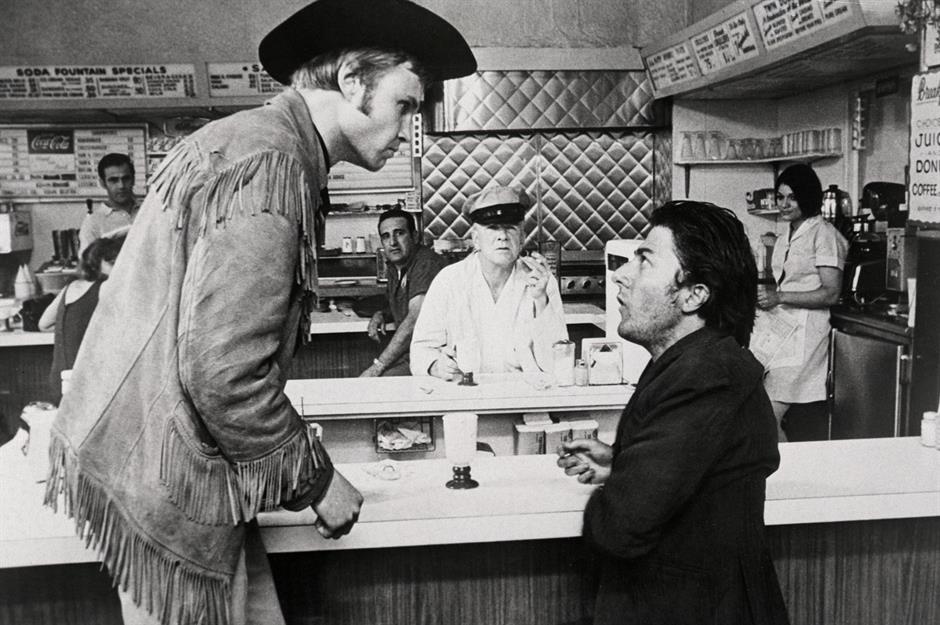
The classic diner is certainly no stranger to the big screen, either. Through the 1960s, 1970s and well beyond, this classic piece of Americana was a backdrop for all sorts of dialogue and drama. Jon Voight and Dustin Hoffman play out a scene in a diner in this movie still from Midnight Cowboy (1969). The list of 'soda fountain specials' just to the left of Voight's head is a nice touch.
1970s: C & J's Diner in St Paul, Minnesota
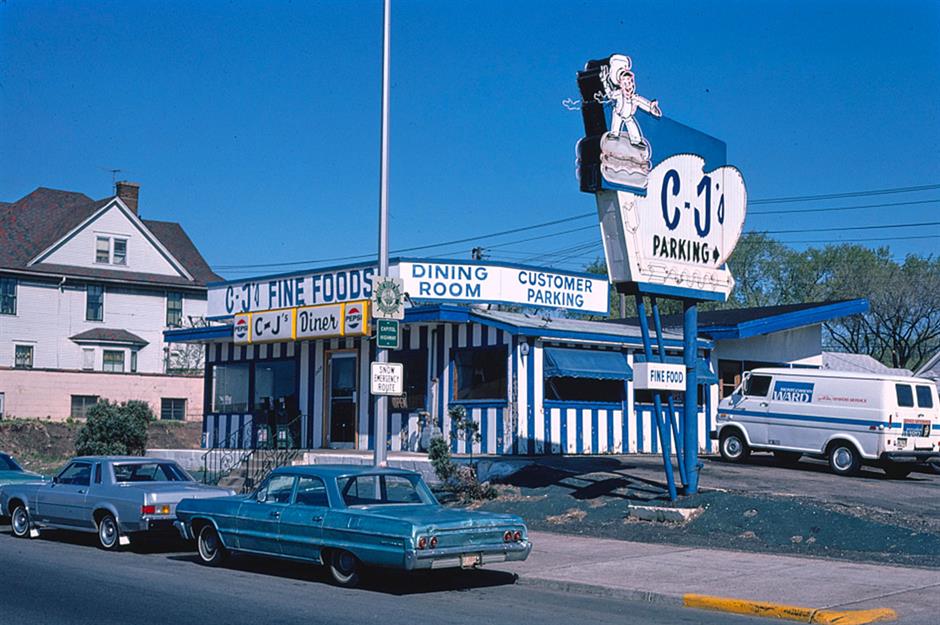
Though fast-food restaurants were gaining ground in the 1970s, the American diner remained an enduring icon. Cementing the diner's place in the American psyche, the popular TV show Alice, which was set almost entirely in a diner, began airing in 1976. Here's a classic and humble diner from 1976, with a bold sign and a blue-and-white-striped façade to boot.
1980s: Mickey's Diner in St Paul, Minnesota
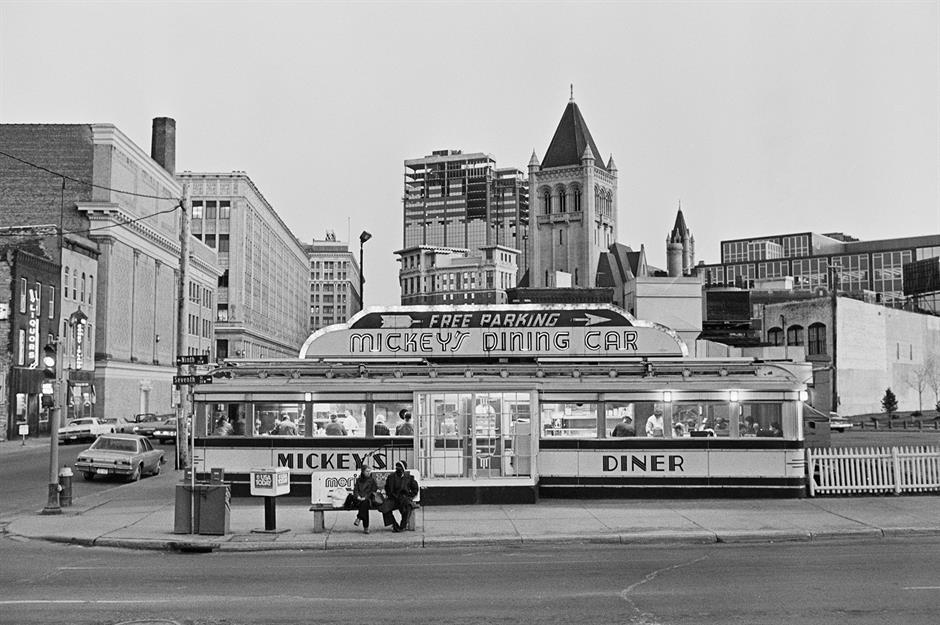
Entering into the 1980s, the classic diner was no longer just a place to eat: it was a cultural institution. By this point in time, diners across the country were being recognised for their special historical significance. Mickey's Diner – an old-school, railroad dining car-inspired spot in downtown St Paul that opened in 1939 – is among the oldest in the country, and it was added to the National Register of Historic Places in 1983.
1980s: truckers in a diner in San Leandro, California
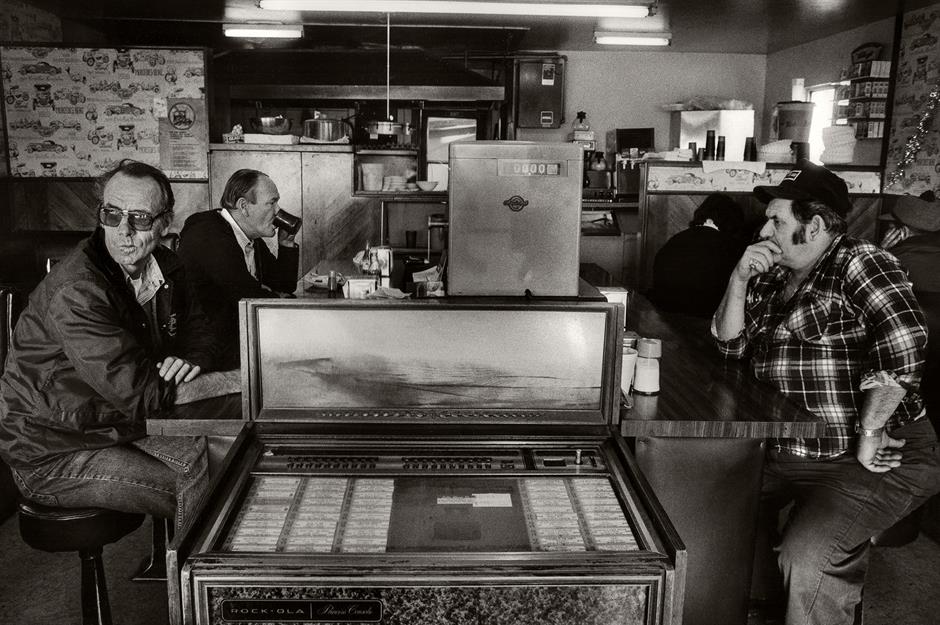
Despite the diner's legendary status by this decade, it ultimately served the same purpose at its core: to feed hungry customers with plates heaped high with good old-fashioned American grub. That's exactly what's happening here as a group of truckers eagerly await their meal at a no-frills diner in San Leandro, California in 1985. The jukebox appears front and centre in the photograph, too.
1980s: the bar at Finch's Restaurant, Raleigh
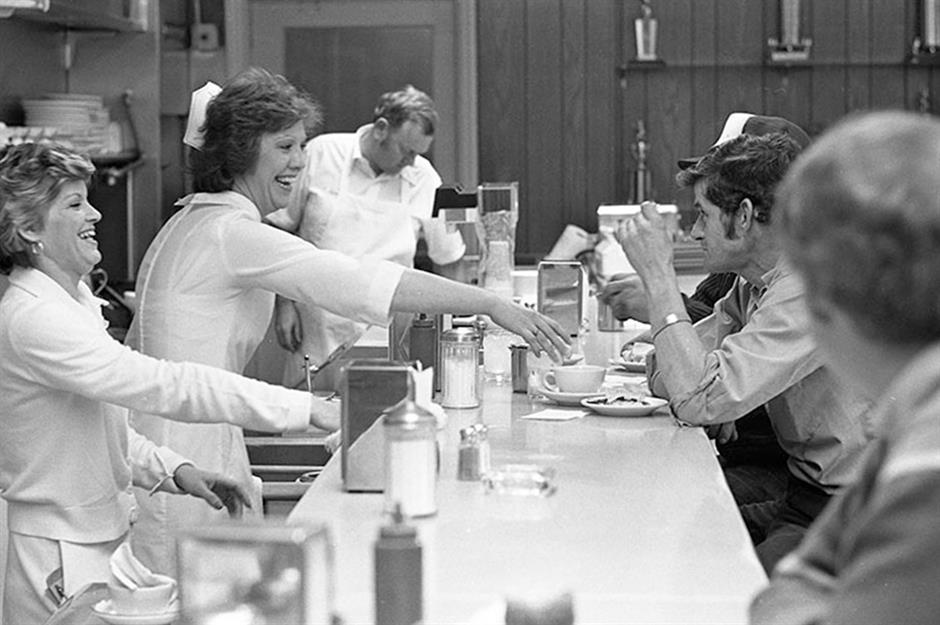
This photograph could almost be from any decade: the laughing servers, bar-propped punters and humble cup of Joe capture the timeless essence of the American diner. It happens to have been taken in 1985 at Finch's Restaurant, a diner that served the folks of Raleigh, North Carolina for some seven decades.
1990s: the diner plays a starring role
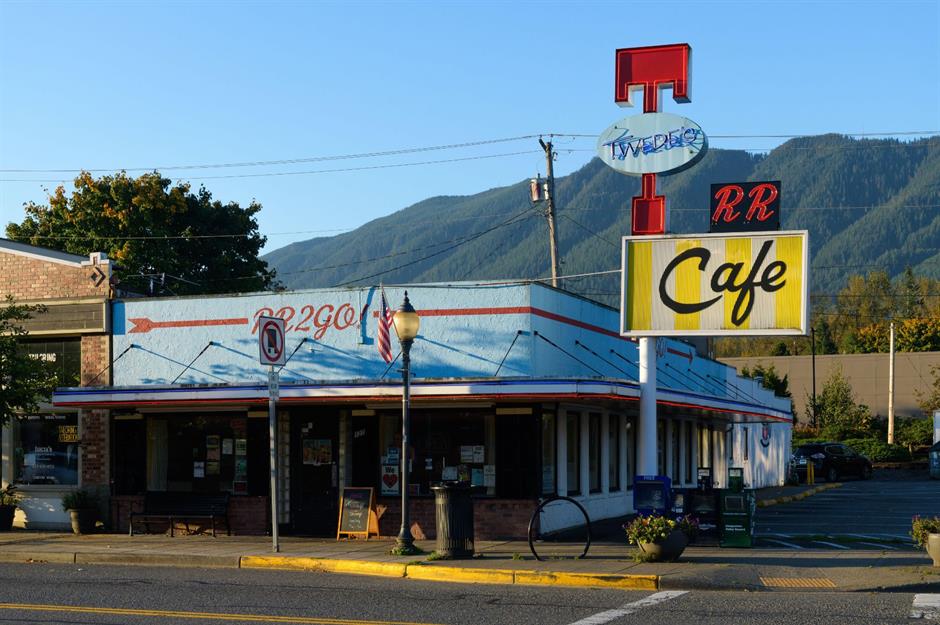
The humble diner played a central role in cult TV show Twin Peaks, which first aired in 1990 and was revived for a third series in 2017. Agent Dale Cooper (played by Kyle MacLachlan, pictured in a scene with Sherilyn Fenn) famously falls in love with the cherry pie served at the fictional Double R Diner. The show was filmed at Twede’s Café (then called the Mar-T Cafe) in North Bend, Washington, and customers still flock here for a slice of its famous sweet treat, best served with a 'damn fine cup of coffee'.
1990s: waitresses in a classic US diner
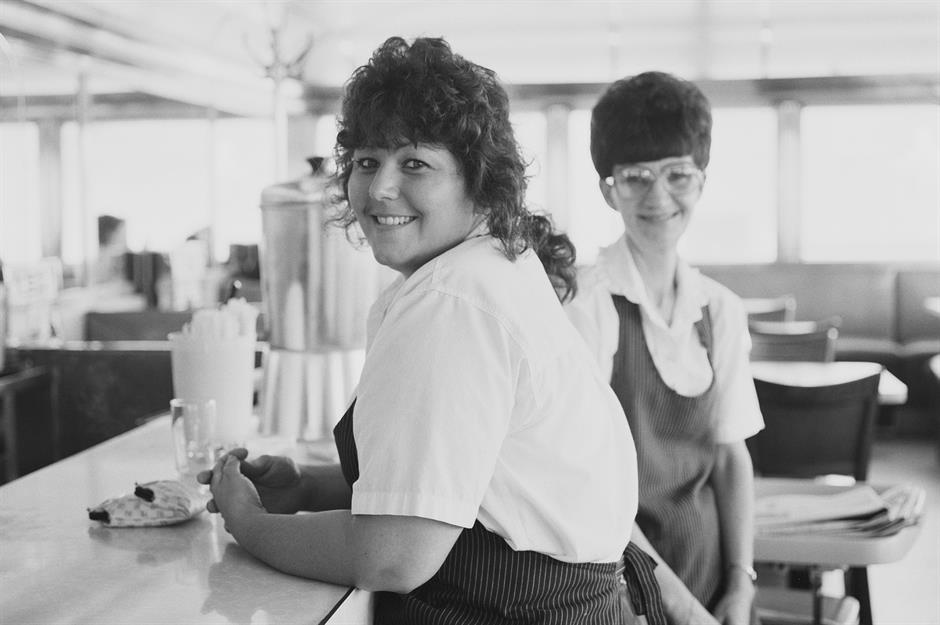
Another decade on and another timeless snapshot of the all-American diner: friendly servers and a down-to-earth vibe underpin the wholesome diner experience. This smiling pair are captured in a New Jersey joint in 1993.
1990s: a diner scene from Thelma and Louise
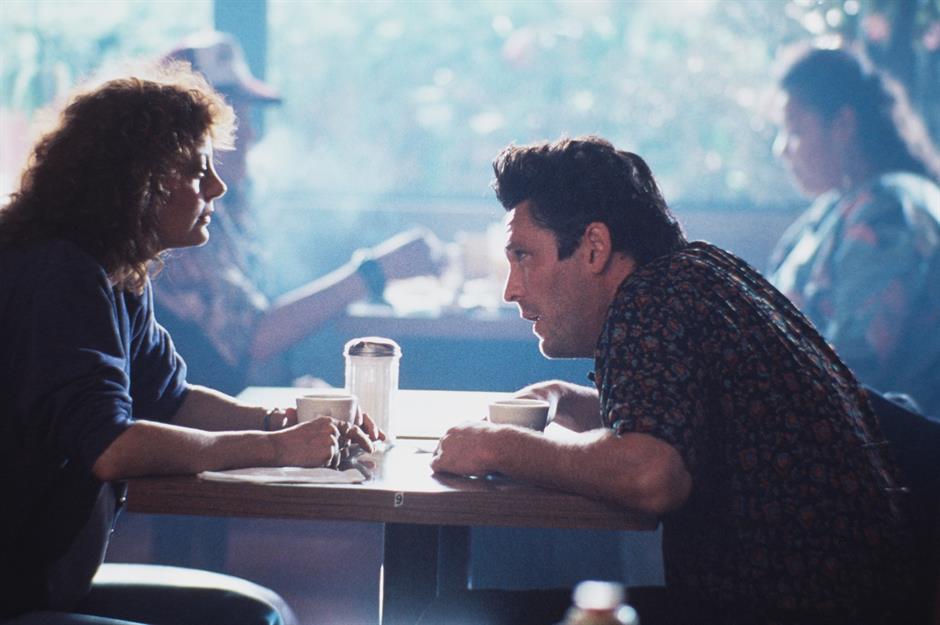
In the 1990s, the diner was still a favoured movie location. Here actors Susan Sarandon and Michael Madsen play out a scene in cult road movie Thelma and Louise, released in 1991.
2000s: a diner along Route 66
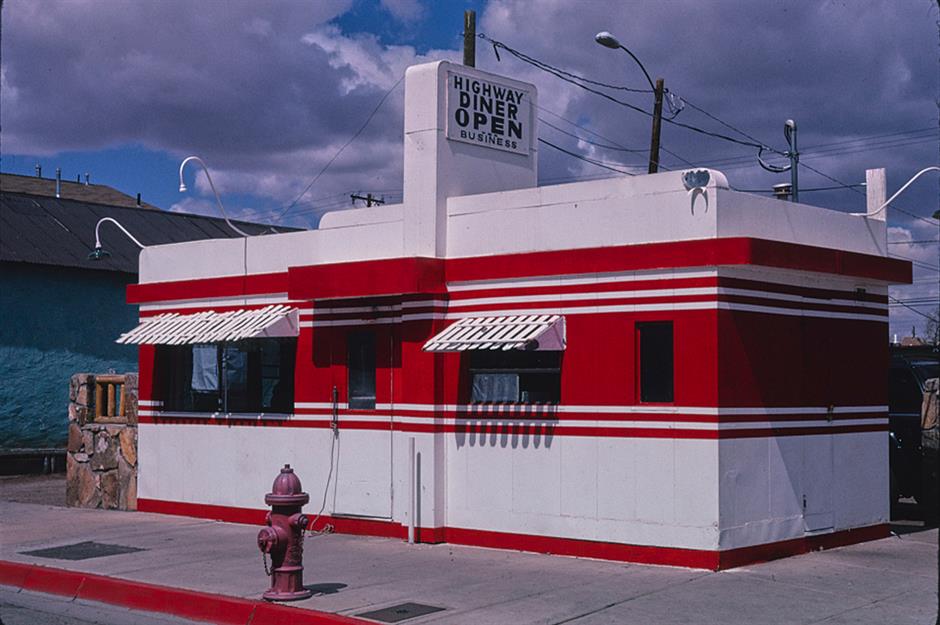
By the 2000s, diners were far from just convenient places to stop for fuel along a journey – they were little slices of Americana that were sights in themselves, sought out by tourists embarking on classic road trips like Route 66. This simple-looking diner – aptly named Highway Diner – can be found along the Mother Road. It's captured here in 2003.
2000s: Barack Obama on the campaign trail in 2008
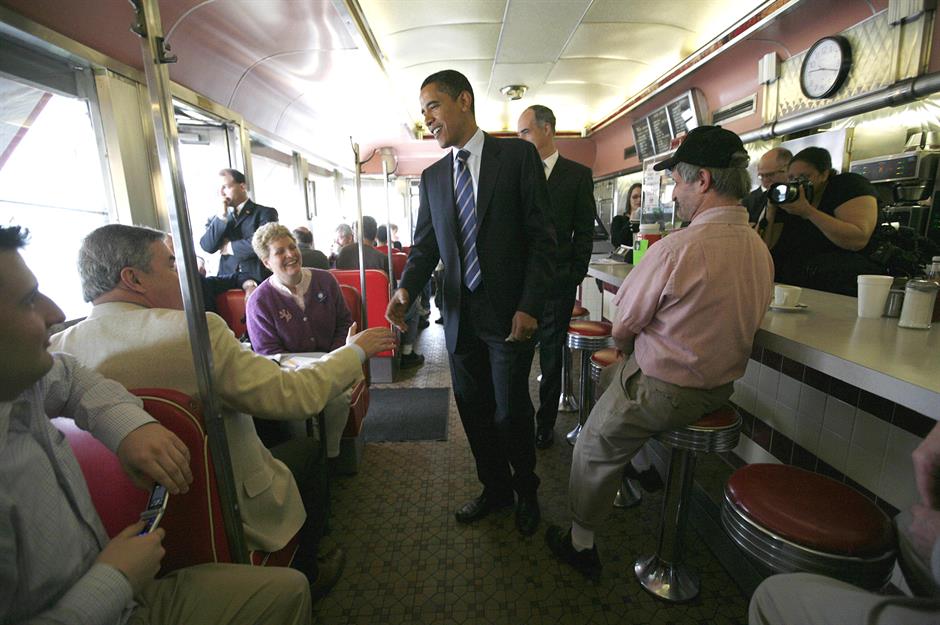
More than 40 years on from JKF's efforts, then-presidential candidate Barack Obama is pictured here greeting locals at the Glider Diner in Scranton, Pennsylvania. Though decades have passed the diner is still a pillar of the campaign trail. Obama ate a tidy plate of waffles and sausage here before he went on his way.
2000s: a breakfast plate at Big Bad Breakfast
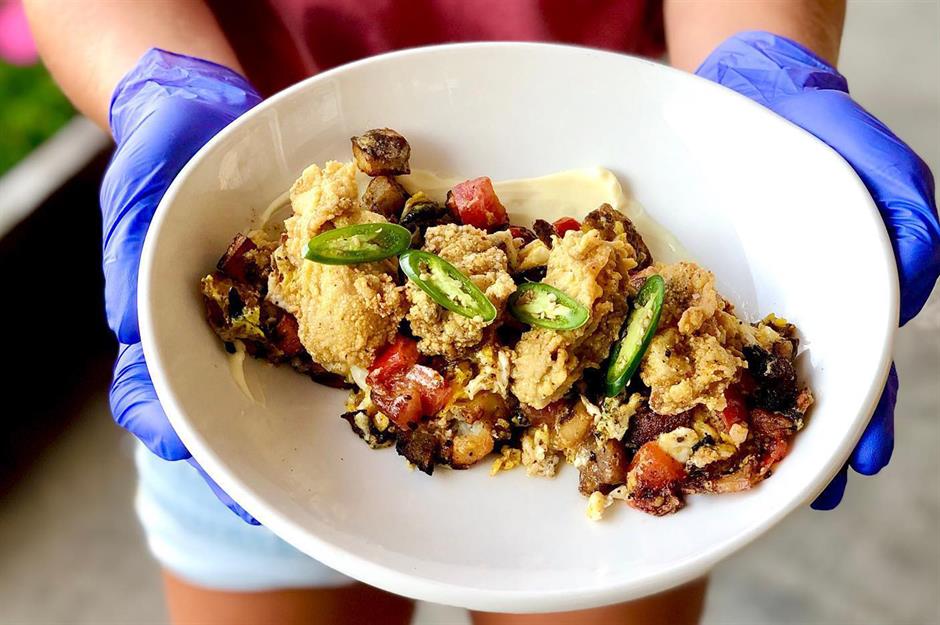
The diners that sprung up in the Noughties weren't all meatloaf, malts and mammoth breakfast platters, though. In this decade, new diner-style restaurants began offering a more refined menu while not scrimping on the down-to-earth vibe. An example is Big Bad Breakfast, the vision of James Beard award-winning chef John Currence, which first opened in Oxford, Alabama in 2008. Options like the Hang Town Fry – an eggy scramble topped with fried Gulf oysters – are a cut above your usual diner chow.
2010s: Mel's Diner in Fremont, Nebraska
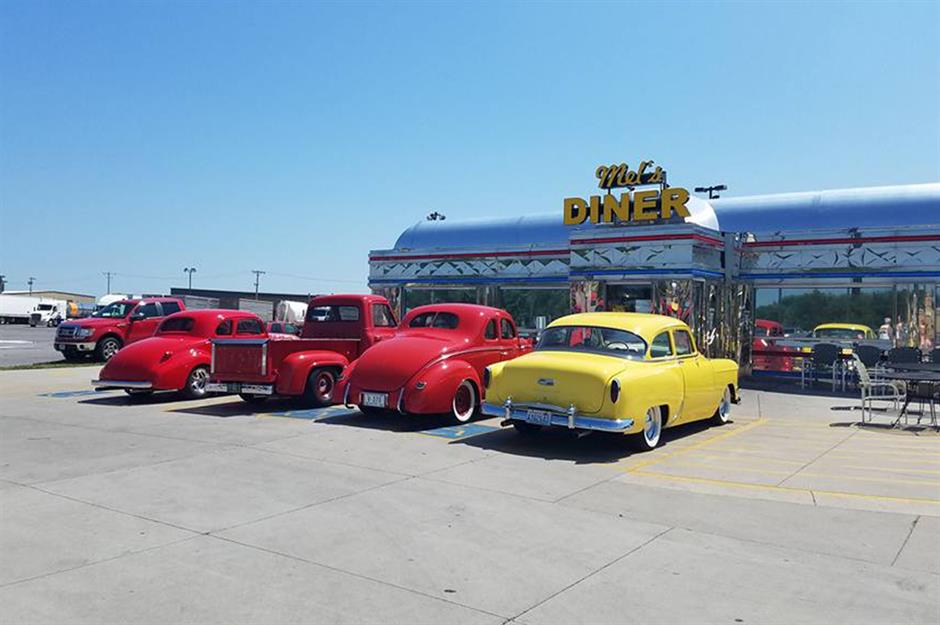
The diner trend has ultimately gone full circle too. While some new diners are concentrating on bucking traditions, others are committed to bringing the 1950s back to life. That's true of Mel's Diner in Fremont, Nebraska, which opened in 2011. Its design is wonderfully retro with a steel façade and sunshine yellow sign, plus little jukeboxes, neon accents and vintage cars parked out front.
2020s: Rosebud American Diner in Somerville, Massachusetts
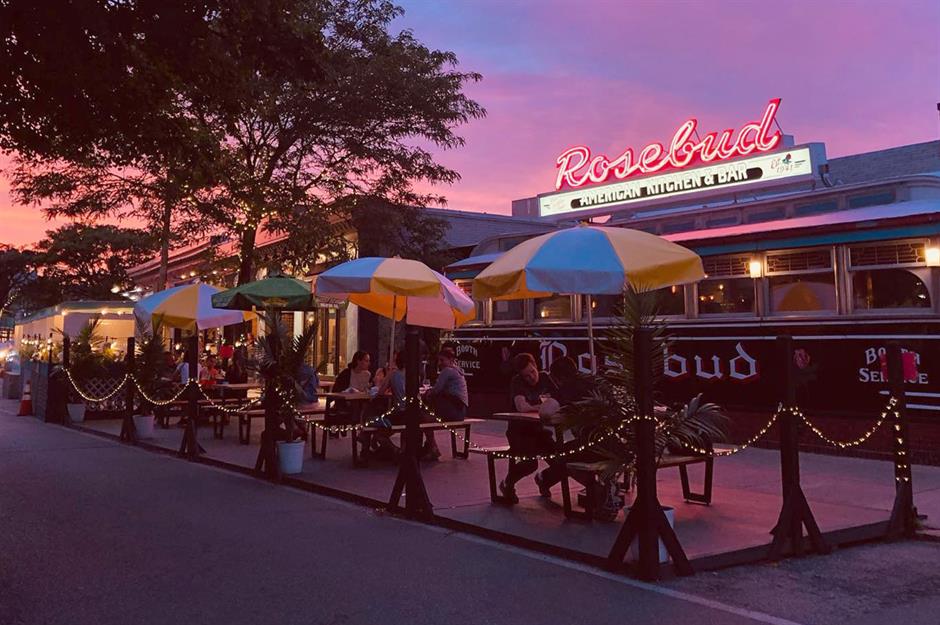
In the present day, painstaking renovations are ensuring America's classic diners are preserved for posterity. Among them is Rosebud, dating back to the 1940s. The dining car has been pimped and polished, extra restaurant space added and the menu given some creative twists (think truffle fries and chicken and waffles with maple and black pepper gravy). Others that have stood the test of time include Natick's Casey's Diner and 1920s-era Palace Diner in Biddeford, Maine.
Now discover the classic dishes we think should make a comeback
Last updated by Natasha Lovell-Smith.
Comments
Do you want to comment on this article? You need to be signed in for this feature